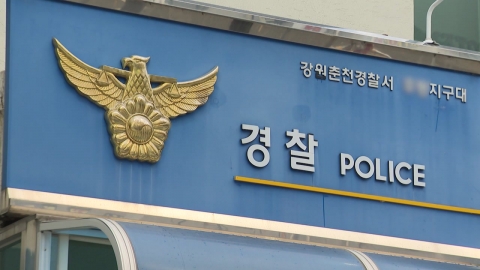■ Telephone connection: Lee Young-joo, professor of fire and disaster prevention at Kyungil University
* The text below may differ from the actual broadcast content, so please check the broadcast for more accurate information. Please specify [YTN Newswide] when quoting.
[Anchor]
It is said that a fire and a large explosion were heard at POSCO's Pohang Steelworks early this morning. Fire officials say the initial diagnosis was successful in about two hours, but it is expected to take some time to complete.
[Anchor]
Let's talk with Lee Young-joo, a professor of the Department of Fire and Disaster Prevention at Kyungil University. Professor, are you out?
[Lee Young-joo]
Hello.
[Anchor]
A fire broke out at POSCO Pohang Steelworks. The fire authorities issued the first stage of response and even heard a loud explosion, so what do you think is the fire and dangerous reason for this steel mill?
[Lee Young-joo]
Basically, in the case of steel mills, there are many processes that use high temperatures. So, if you look at it from a fire risk perspective, it can be said that the risk is much higher than other production processes. Also, when a fire occurs, there is a lot of heat used, so the spread of fire and such parts can occur quickly. Also, considering the raw materials required in the iron making process and combustible gases generated in the process, the risk of fire is high.
Another thing is that there is a high risk of fire at the scene.On the other hand, the process is interrupted by the fire of the steel mill, and then the furnace itself stops, for example, and then the molten metal and slag harden and stick quite a bit. So it takes a lot of time to restart this part, so there's also the possibility of secondary damage, production disruptions, and so on.
[Anchor]
Professor, the ignition point is called the 3 Finex plant furnace facility. It is said that the height of the 3 Finex plant is 50m, so it was difficult to access, but if there was a fire in this facility, wouldn't it be more difficult to put out?
[Lee Young-joo]
That's right. In fact, if a fire breaks out in a furnace, metal molten in the furnace may flow down or splash around due to the fire, so there is a risk of fire spreading. In addition, there is a clear risk of burns and explosions because a large amount of water vapor is generated in the process of receiving all the water by pouring metal into a high-temperature furnace.
In addition, due to the complex structure of the factory, it is not easy to access, and there are areas where it is difficult to quickly and actively suppress because there is a possibility of exposure to high temperatures or toxic gases.
[Anchor] Fortunately, the initial diagnosis was successful in about 2 hours and 20 minutes after the fire broke out, but it is expected to take a considerable amount of time to complete, so why?
[Lee Young-joo]
Because there are quite complex facilities inside the factory, even if it is first-time, it is likely that the fire has not been fully extinguished in an invisible place. Therefore, it will take a long time to check the space between the complex facilities inside the factory to see if all the fires are completely contained.
However, as described above, the fire was first extinguished within the first stage of response and within two hours, so if it is confirmed that there is no possibility of re-ignition, it will be fully cleared even if it takes time to complete.
[Anchor]
Professor, witnesses at the scene said they heard an explosion and even felt a vibration from 10km away. It was said that it was even misunderstood as an earthquake, but if we estimate the cause of this explosion sound, how should we look at it?
[Lee Young-joo]
So far, we need to check the site. Since the FINEX process itself is a direct iron-making furnace facility, there is a possibility that gas and other combustibles generated in this process have ignited and lead to explosions.
On the other hand, the initial report reported that a fire broke out in the hydraulic chamber. In the case of the hydraulic chamber, it is a place to manage and control hydraulic systems that operate equipment and facilities in the steel plant, and most of the hydraulic systems use high-pressure fluids, in short, hydraulic flow. So, it seems necessary to investigate the cause of the fire later, keeping in mind the situation of the leakage of hydraulic flow and the possibility of ignition and explosion for some reason.
[Anchor]
There was also news of casualties. It is reported that one person was taken to the hospital with first or second-degree burns on his face and hands, but can I say that there are no additional casualties as the first diagnosis has been completed and a big fire has been caught?
[Lee Young-joo]
That's right. Thankfully, one of the employees has been confirmed to have been injured, and I'm glad it's known that it's not a major life-threatening injury. However, since the initial examination has been completed and the on-site situation is now under control, the possibility of additional casualties is relatively low.
However, if reoccurrence or re-explosion occurs in this process, human damage may occur.I think it would be right to see that the possibility of Ma is relatively low. [Anchor] In the case of steel mill fires, it seems that it will be more difficult to suppress than ordinary factory fires. What do you think about this part?
[Lee Young-joo]
It's inappropriate to mention something difficult because it's already been contained to some extent. Nevertheless, when a typical steel plant fire occurs, there can be quite dangerous situations in this process or process of dealing with hot molten metals called furnaces, as I explained earlier.
So, there are a lot of combustible gases, fuels, or combustible substances in this suppression. The complexity of the facilities makes it difficult for fire shops to accurately suppress or water them, and the difficulty of accessing the factory. If you take these into account comprehensively, it can be quite difficult to put out than fires at other sites.
[Anchor]
As you just said, I hope there is no possibility of additional explosions due to the complexity and combustible substances inside the factory.Do you think there's a possibility of further explosions?
[Lee Young-joo]
I don't think the possibility of further explosions is that high. Explosion itself requires the leakage of raw materials or the creation of an explosive environment, and there must be an ignition source. In the case of steel mill furnaces, there are no situations like other facilities, chemical plants, etc. that store things that are at high risk of explosion.
Therefore, it is difficult to conclude that there is a possibility of additional explosion if it is a process of checking the site and has been suppressed to some extent. However, the risk of additional explosions is not high if the processes in which this process is being carried out, the gas that can be generated in this process is properly discharged, or the leakage of hydraulic flow is well managed.
[Anchor]
I see. As soon as the on-site situation is covered, we will continue to deliver it. So far, I've talked with Lee Young-joo, a professor of fire and disaster prevention at Kyungil University. Professor, thank you for talking today.
※ 'Your report becomes news'
[Kakao Talk] YTN Search and Add Channel
[Phone] 02-398-8585
[Mail] social@ytn.co.kr
[Copyright holder (c) YTN Unauthorized reproduction, redistribution and use of AI data prohibited]
Nationwide
More- "Suspicion of Intervention in Nomination" will be conducted in the afternoon to examine the arrest of Myung Tae-kyun.
- Fire from a 25-ton truck parked in the garage...40 million won property damage
- The police overpowered him with a rampage...When I checked the CCTV and body camera,
- A highly pathogenic AI outbreak at a duck farm in Seosan, South Chungcheong Province






![[Yetterview] Dixon's youth who overcomes wandering for 2 years and 9 months and runs again.](https://image.ytn.co.kr/general/jpg/2024/1126/202411261616521790_h.jpg)

